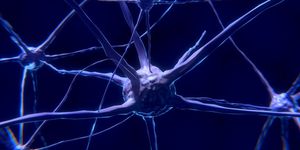We are Changing the Shape of Our Dogs Brains
Genetic engineering by humans has been going on for thousands of years. It is not in the same capacity as today, with technologies such as CRISPR, and targeted mutations, but it has it’s consequences and effects just the same.
Throughout time, humans have bred a plethora of different dogs. They would do this to create breeds with specific traits to perform particular tasks. Breeding to develop certain characteristics is known as selective breeding and is a form of selection known as “artificial selection.” Selective breeding changes the genetic makeup of the dog breed — each generation forming a new genetic identity creating unique traits and genes.
While it is easy to see how this process changes the dog's appearance, there is much unknown about how the behavioral differences of selective breeding correlate with genetic differences. Dr. Erin Hecht and her colleagues at Harvard University aim to understand the neuroanatomical variation that causes these behavioral differences when selective breeding takes place. They hypothesize that selective breeding over time changes the structure, size, and shape of the dog's brain, which may play a part in the observed behavioral differences. Hecht and her team decided to take a “data-driven, whole-brain, agnostic approach to assess morphological variation across dog brains.”
The dogs used for the study were categorized by breed, sex, age, and the behavior for which they are bred. For example, Beagles were classified as scent hunting, whereas Siberian Huskies were categorized as running/racing behaviors. MRI scans were performed of all the dogs (62 total dogs representing 33 different breeds) to study the shape of the brain within each dog. The data collected will determine if there is a significant difference between different breeds and if there is a substantial similarity between the same breeds.
It is indeed established by this study that there is a “significant variation in dog brain morphology.” Interestingly, when looking at the correlation between brain size and body mass differences between breeds, they discovered that the size of the brain does not relate to the body size of the dog. Smaller dogs were observed to have a more spherical brain as opposed to the larger breeds. Morphological differences like this correlated to neural network differences between breeds, potentially resulting in different behaviors.
To study this further, they looked at the “internal brain organization” known as neural networks. They looked at individual and independent neural networks within the brains of each dog. They were able to identify specific neural networks within the brain that correlated with certain behaviors. One fascinating example is the network involved with regions controlling eye movements, and spatial navigation “showed a significant correlation with sight hunting.” However, networks in areas involving scent and taste, “showed a significant correlation with scent hunting.”
This study opened a wide door to the connection between neural networks, brain morphology, and associated behaviors. Dr. Hecht suggests we need to keep in mind that dog breeding in the current age is to primarily produce calm and relaxed house pets, regardless of the breed. Like any behavioral difference, it also requires experience to form and develop any behavior. Hecht presents that this study could contribute to future studies in brain-behavior relationships.
To learn more about the history of artificial selection in dog breeding, watch this video below:
Sources:
"Significant Neuroanatomical Variation Among Domestic Dog Breeds", Hecht et al.









